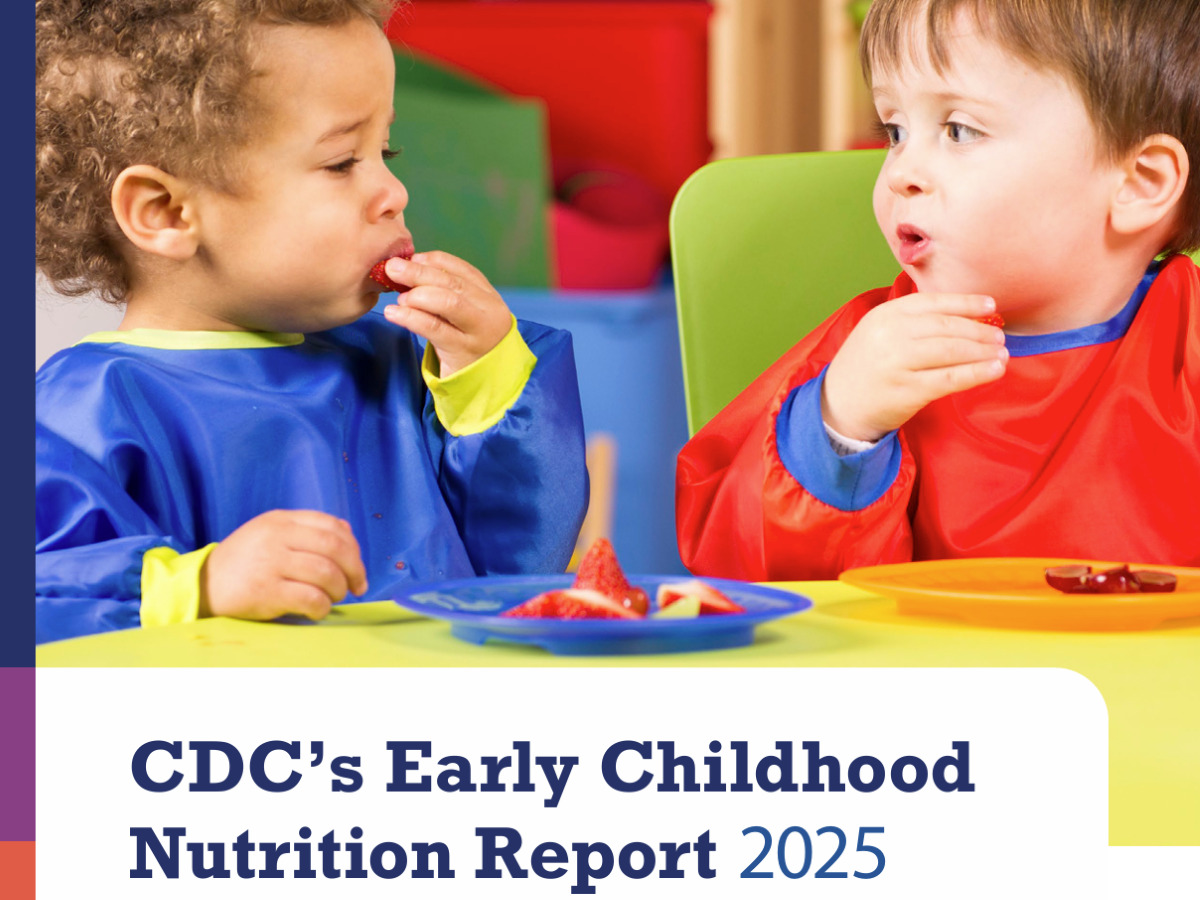Helping Kids Grow Strong: CDC’s 2025 Nutrition Report
June 18, 2025

The CDC’s 2025 Early Childhood Nutrition Report gives us a big-picture look at how young children in the U.S. are eating and growing. It focuses on kids from birth to age 5 and shares important facts about breastfeeding, starting solid foods, eating healthy and how states support good nutrition. The report shows where we’re doing well—and where we need to do better—to help all children grow up healthy and strong.
Why This Matters
This report is especially important for early childhood educators and caregivers who serve meals through the CACFP. These providers help shape children’s eating habits every day. By understanding what kids are eating and what support they need, educators can make better choices about meals and snacks. The report also helps programs and policymakers find ways to improve nutrition in child care settings.
Breastfeeding: A Healthy Start
The report shows that only 2 out of 5 babies born in 2022 were still being breastfed at their first birthday. The CDC report calls this number out as being too low, as infants will not get the full benefits of breast milk. The report also found that 10 states and Washington, D.C. fully support breastfeeding in their child care rules, while 38 states partly support it. More support in child care centers can help moms breastfeed longer.
Starting Solid Foods: Timing Matters
Some babies are being fed solid foods too early. About 1 in 10 infants born between 2019 and 2021 were given foods other than breast milk or formula before they were 4 months old. That’s too soon. Starting solids too early can increase their risk of overweight and obesity, while starting them at the right time helps babies grow safely and learn to enjoy healthy foods.
Healthy Eating: Room for Improvement
Only 49% of children ages 1 to 5 ate vegetables at least once a day in 2022–2023. That means more than half of young kids aren’t getting enough veggies. On the other hand, more than half of children under the age of 5 drink at least one sugary drink per week. Eating a variety of healthy foods—like fruits, vegetables, whole grains, and lean proteins— and limiting added sugars is important for brain growth, strong bones, and staying healthy.
Making Nutritious Food Affordable
The report also talks about how hard it can be for some families to afford healthy food – 31% of children are living in households where nutritious foods are too expensive for their family to afford. When healthy food costs too much, it’s harder for families to make good choices. Programs like CACFP can help by offering healthy meals and snacks at little or no cost to families.
This report is a helpful tool for anyone who works with young children. It shows us where we can do better and gives ideas for how to help kids eat well and grow up strong. Want to learn more or see how your state is doing? You can check out the full report on the CDC’s website.
